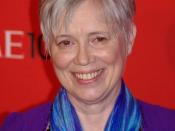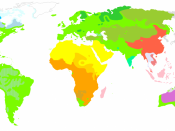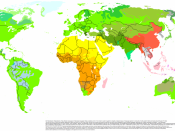Most living creatures communicate in some way. Birds and whales sing, monkeys and chimpanzees chatter, dolphins click and squeak, even bees perform their elaborate waggle dance. Language however, involves arranging exact sounds in the correct grammatical order to convey a message. Sternberg (1995, p.345) defines human language as, "...an organised means of combining words in order to communicate." Clearly, human language is much, much more than arranging particular sounds. It is an outlet for our thoughts and desires, it allows us to convey our feelings, our hopes and dreams, we can even use language to deceive others or tell jokes. In fact, it is this complexity of human language that prompts researcher Sternberg to argue that language is solely a human ability. He comments, "Parrots may say certain words but they are not really using language . What they say is not organised and does not involve combining words to pass a message to others."
(Sternberg, 1995, p.345)
So can it be assumed then that animals do not possess this quality? Research conducted by Savage-Rumbaugh (1986) with bonobo monkeys may suggest otherwise and behaviourists such as Skinner (1957) would argue that language is learnt as a process of re-inforcement and therefore, "as a result, there is nothing special about language and thus no reason why language should not be learnt by other species." (Eysenck, 2000, p.245) Nativist Chomsky, believing language to be an innate human ability, disagrees. "If an animal had a capacity as biologically advantageous as language but somehow hadn't used it until now, it would be an evolutionary miracle, like finding an island of humans who could be taught to fly." (Chomsky, 1993, p.249)
To appreciate how this unique quality makes humans distinctive from other animals it would be prudent to consider the criteria that categorises human language.


